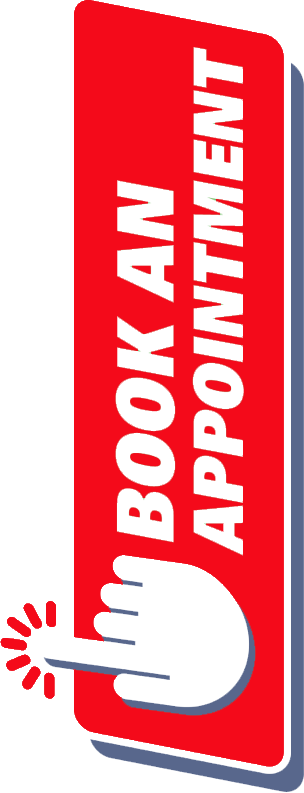
Anatomical nomenclature: Terms of Planes, Positions, Body Parts and Movements
Anatomical nomenclature refers to the standardized language used to describe the positions, structures, and features of the human body, which aids in clear and precise communication among medical professionals. The system is primarily based on Latin and Greek, using specific terms to denote anatomical structures such as 'anterior' (front) and 'posterior' (back) to facilitate universal understanding. Familiarity with this terminology is essential for students in medicine and related fields to accurately identify and discuss the various parts and functions of the body.
Anatomical position
Anatomical position (anterior view)
When describing any orientation, location, movement, and direction, the reference is the anatomical position. In this universally accepted reference, the person is considered to be standing upright, with the arms hanging by the side, palms facing forward, and thumbs pointing away from the body. The feet are slightly parallel, and toes oriented to the front.
The anatomical position has no real meaning on its own since it is a reference for position. It has to be placed in the same context as other anatomical terms, such as body planes, directions, and relations. Regarding anatomical planes, these are imaginary planes that intersect the body, creating various cuts or slices of various organs and structures. There are four major planes of the body:
- Mid-sagittal/median - vertical plane passing through the centre of the body (midline) that cuts it longitudinally into right and left halves.
- Sagittal - arbitrary vertical plane passing through the body parallel to the midline, slicing it longitudinally into right and left parts. To aid your understanding, imagine that you are slicing an apple - each slide is a sagittal plane.
- Frontal (coronal) - vertical plane at right angle to the sagittal plane that divides the body into anterior (front) and posterior (back) portions.
- Transverse (axial) - horizontal plane at right angles to the sagittal and frontal planes, slicing the body into a superior (upper) and inferior (lower) portions. The obtained cuts are transverse or axial views.
Directional terms
We’ve seen how the sections and views included in a typical anatomical atlas are obtained, but how can we describe the position and relation between various structures? By using anatomy directional terms. These adjectives compare the position of two structures relative to one another in the anatomical position. They are in pairs of opposites, so if the nose is superior to the mouth, it is automatically inferred that the mouth is inferior to the nose.
| Directional terms and relations | |
| Anterior |
In front of or front |
| Posterior |
In behind of or behind |
| Ventral |
Towards the front of the body |
| Dorsal |
Towards the back of the body |
| Distal |
Away or farthest away from the trunk or the point of origin of the body part |
| Proximal |
Closer or towards the trunk or the point of origin of the body part |
| Median |
Midline of the body |
| Medial |
Towards the median |
| Lateral |
Away from median |
| Superior |
Towards the top of the head |
| Inferior |
Towards the feet |
| Cranial |
Towards the head |
| Caudal |
Towards the tail |
| External |
Towards the surface, superficial |
| Internal |
Away from the surface, deep |
| Superficial |
Nearer to the surface |
| Deep |
Farther from the surface |
| Palmar |
Anterior hand or palm of hand (palmar) |
| Dorsal (of hand) |
Posterior surface of hand (dorsum) |
| Plantar |
Inferior surface of foot (sole) |
| Dorsal (of foot) |
Superior surface of foot (dorsum) |
Types of movements
Now that we’ve looked at planes and relations, let’s learn the anatomy terms that describe movements. As you know, joints are the junction of two or more bones and allow movements to take place in various directions and degrees of motion. Non-skeletal structures like the lips, tongue and eyelids also move, but their associated movement terms are specific.
When describing joint movements, two factors are included:
- Axis, or fulcrum, around which the specific part moves
- Plane of the movement
| Movement terms | |
| Flexion | Decreasing the angle between two structures |
| Extension | Increasing the angle between two structures |
| Plantarflexion | Flexion of the plantar (underside) part of the foot |
| Flexion of the dorsum (top) part of the foot | |
| Abduction | Moving away from the midline |
| Adduction | Moving towards the midline |
| Protrusion | Moving straight ahead or forwards (tongue, mandible) |
| Retrusion | Moving backwards (tongue, mandible) |
| Protraction | Moving forwards and laterally simultaneously |
| Retraction | Moving backwards and medially simultaneously |
| Depression | Moving downwards |
| Elevation | Moving upwards |
| Medial (internal) rotation | Spiral movement towards the midline |
| Lateral (external) rotation | Spiral movement away from the midline |
| Rotation (trunk) | Twisting motion towards or away from the midline (left or right) |
| Flexion (trunk) | Side (lateral flexion) or forward (anterior flexion) bending |
| Extension (trunk) | Bending backwards |
| Pronation | Medial rotation of the radius, resulting in the palm of the hand facing posteriorly (if in anatomical position) or inferiorly (if elbow is flexed) |
| Supination | Lateral rotation of the radius, resulting in the palm of the hand facing anteriorly (if in anatomical position) or superiorly (if elbow is flexed) |
| Circumduction | Combined movement starting with flexion, then abduction, extension, and ending with adduction |
| Deviation | Movement of the wrist joint towards the radial or ulnar sides (radial deviation, ulnar deviation) |
| Opposition | Touching the pad of any one of your fingers with the thumb of the same hand |
| Reposition | Separating the pad of any of your fingers from the thumb of the same hand |
| Inversion | Plantar side of the foot is rotated towards the median plane |
| Eversion | Plantar side of the foot is rotated away from the median plane |

